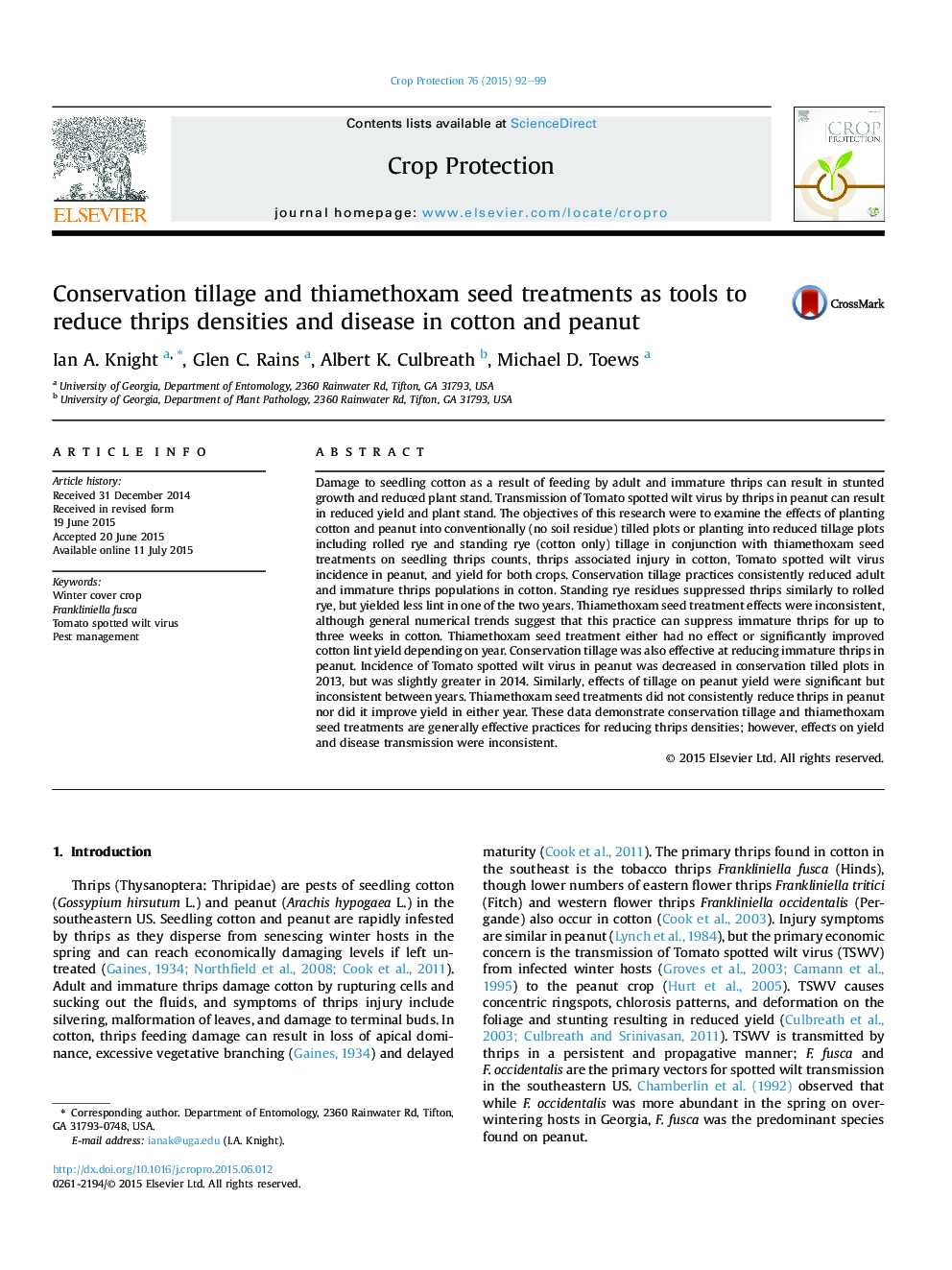| Article ID | Journal | Published Year | Pages | File Type |
|---|---|---|---|---|
| 6373401 | Crop Protection | 2015 | 8 Pages |
Abstract
Damage to seedling cotton as a result of feeding by adult and immature thrips can result in stunted growth and reduced plant stand. Transmission of Tomato spotted wilt virus by thrips in peanut can result in reduced yield and plant stand. The objectives of this research were to examine the effects of planting cotton and peanut into conventionally (no soil residue) tilled plots or planting into reduced tillage plots including rolled rye and standing rye (cotton only) tillage in conjunction with thiamethoxam seed treatments on seedling thrips counts, thrips associated injury in cotton, Tomato spotted wilt virus incidence in peanut, and yield for both crops. Conservation tillage practices consistently reduced adult and immature thrips populations in cotton. Standing rye residues suppressed thrips similarly to rolled rye, but yielded less lint in one of the two years. Thiamethoxam seed treatment effects were inconsistent, although general numerical trends suggest that this practice can suppress immature thrips for up to three weeks in cotton. Thiamethoxam seed treatment either had no effect or significantly improved cotton lint yield depending on year. Conservation tillage was also effective at reducing immature thrips in peanut. Incidence of Tomato spotted wilt virus in peanut was decreased in conservation tilled plots in 2013, but was slightly greater in 2014. Similarly, effects of tillage on peanut yield were significant but inconsistent between years. Thiamethoxam seed treatments did not consistently reduce thrips in peanut nor did it improve yield in either year. These data demonstrate conservation tillage and thiamethoxam seed treatments are generally effective practices for reducing thrips densities; however, effects on yield and disease transmission were inconsistent.
Related Topics
Life Sciences
Agricultural and Biological Sciences
Agronomy and Crop Science
Authors
Ian A. Knight, Glen C. Rains, Albert K. Culbreath, Michael D. Toews,
